The neuropsychologist Xóchitl Ortiz explains in this article what Broca’s aphasia is and proposes activities for the neuropsychological rehabilitation of patients with Broca’s aphasia.
Language is a human faculty for expressing oneself and communicating with others through articulated sound or systems of signs and codes, with the help of which objects in the external world, their actions, qualities and relationships among them are designated.
Components of language
Language consists of components for its communicative function:
- Production: Ability to formulate and communicate meaningful ideas in a grammatically correct manner.
- Naming: Ability to name objects and people.
- Repetition: Ability to reproduce a word or sentence heard.
- Comprehension: Ability to understand the meaning of words, texts or ideas.
Language components can be altered after a brain injury, for example, after a traumatic brain injury or a stroke.
The most frequent disorder or alteration is aphasia, that is, difficulty producing or understanding language.
What is Broca’s aphasia?
Broca’s aphasia, also known as efferent motor aphasia or non-fluent aphasia, is caused by a brain lesion localized in Broca’s area, and is characterized by difficulty in language production, agrammatism, loss of automatization of speech articulation (verbal apraxia), anomia, repetitive language, and comprehension is usually preserved.
Symptoms of Broca’s aphasia
Difficulties are evident in spontaneous speech and in dialogue or conversation. Sometimes, the patient may simply suppress all verbal expression, falling into a state of mutism or semi-mutism.
Neuropsychological rehabilitation of Broca’s aphasia
The NeuronUP platform offers activities that support the rehabilitation of Broca’s aphasia.
Types of activities depending on difficulty in verbal expression
Depending on the difficulty in verbal expression, the activities should be prioritized in the following way:
- Articulation and production of phonemes.
- Repetition of words and sentences.
- Naming of objects.
- Oral and written production.

Subscribe
to our
Newsletter
Activities for the neuropsychological rehabilitation of patients with Broca’s aphasia
1. Oral-lingual-facial exercises
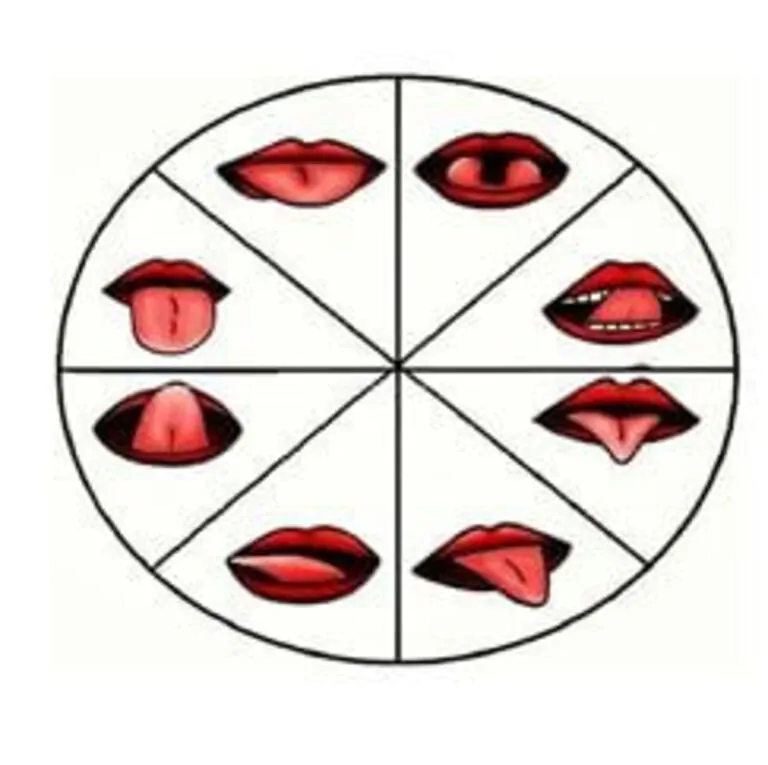
- Stick out and retract the tongue while keeping the mouth open.
- Move the tongue from right to left, touching the corners of the mouth.
- Move the tongue up and down, keeping the mouth open.
- lick the upper and lower lips.
- Touch the hard and soft palate with the tongue.
- Alternately bite the tongue folded upward and downward.
- Clean the teeth with the tongue in a circular motion.
- With the lips together, place them in a kissing position and in a smiling position.
- Smile without showing the teeth.
2. Repetition of words or sentences
NeuronUP offers repetition activities that will make it easier for the therapist to provide words or sentences for the patient.
Repetition exercises are carried out taking into account the number of syllables in a word:
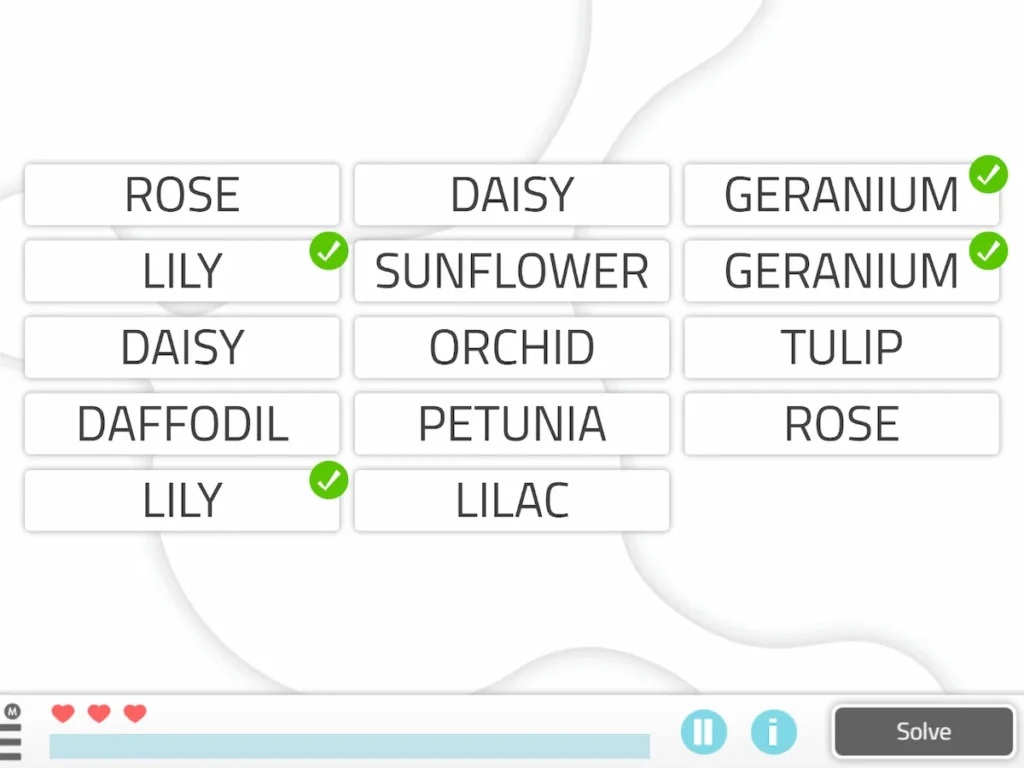
3. Correct Image Name
To work on naming at a basic level, images will be presented in which the patient can relate the name to the object, as in the NeuronUP activity Correct Image Name
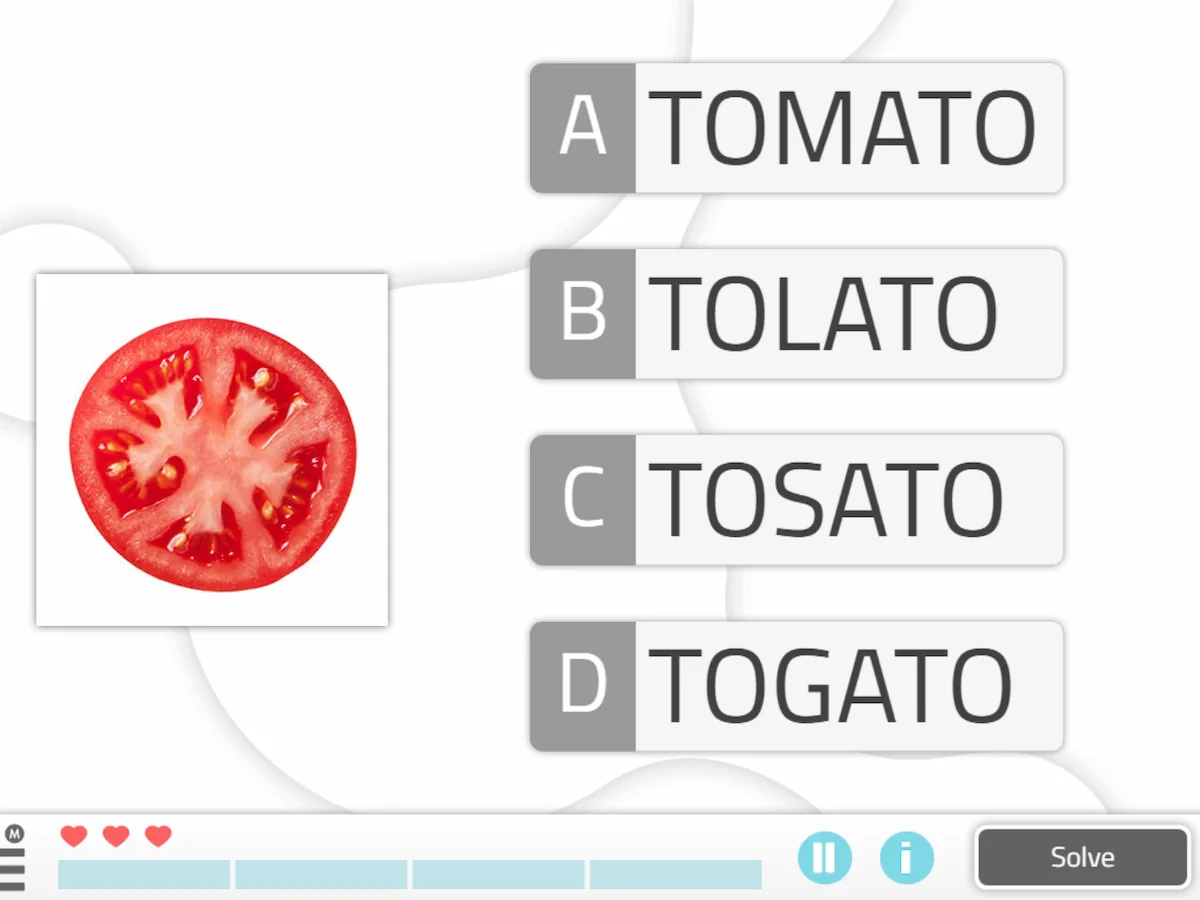
4. Name objects with phonological cues
Subsequently, an image with a single object may be presented, providing phonological help so that the patient completes the name correctly.
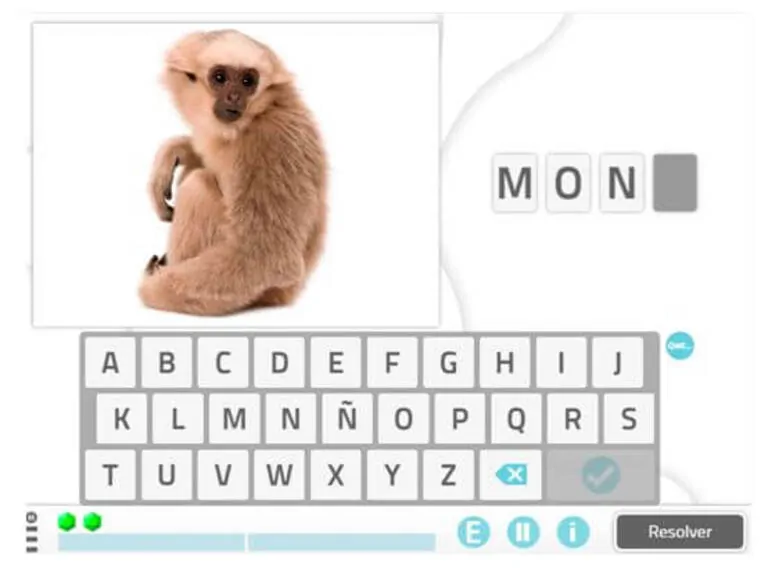
Naming by visual confrontation helps the patient relate the real or animated object with its name.
5. Oral and written production
To work on production with morphosyntax it is important to present the patient with activities that allow them to form a word divided into syllables taking into account the level of difficulty. That is, start with bisyllabic words, and then increase the number of syllables and, therefore, the difficulty of the word, in order to meet the established or desired objectives.
It is possible to work on this in NeuronUP with the digital game Making Words.
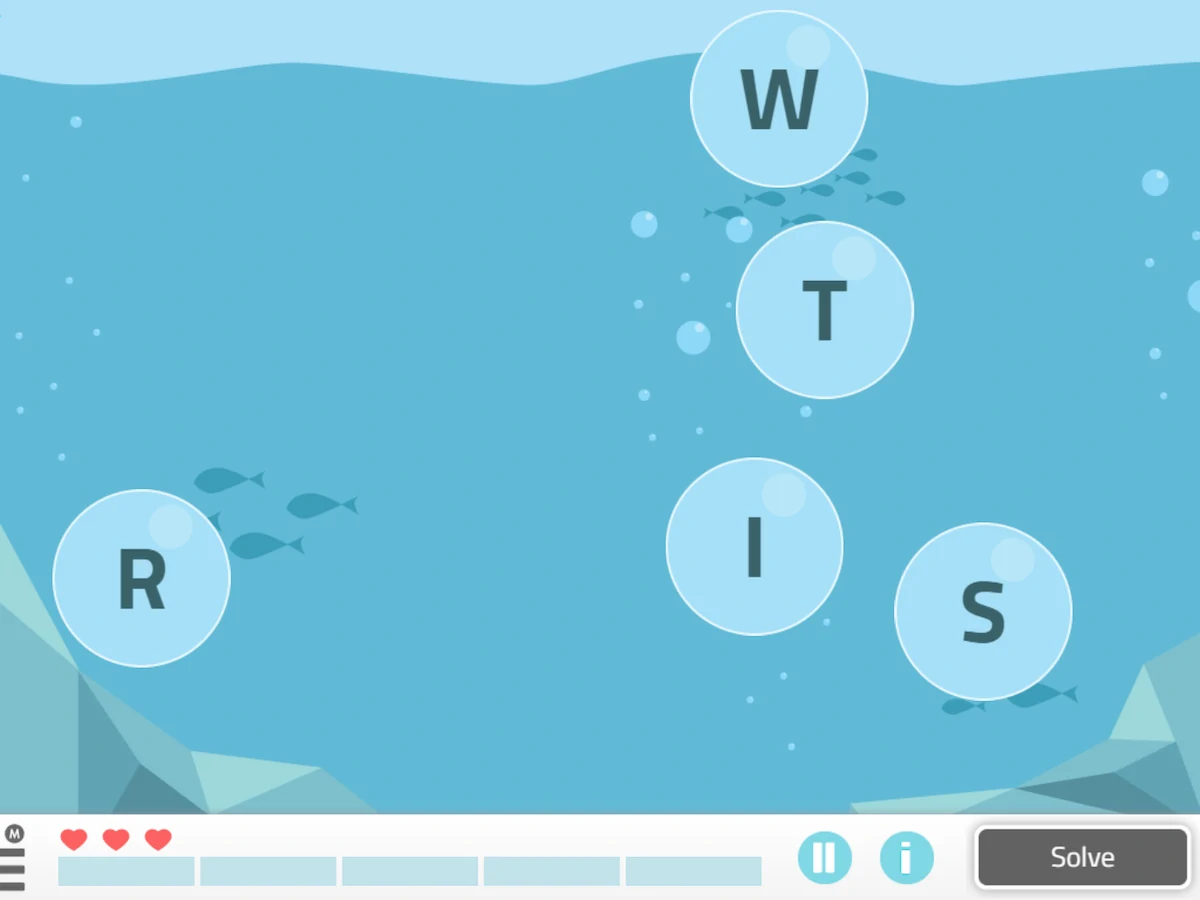
6 Word Scramble
This NeuronUP activity aims for the patient to reach a level where division by syllables is not necessary, managing to form a word from isolated letters.
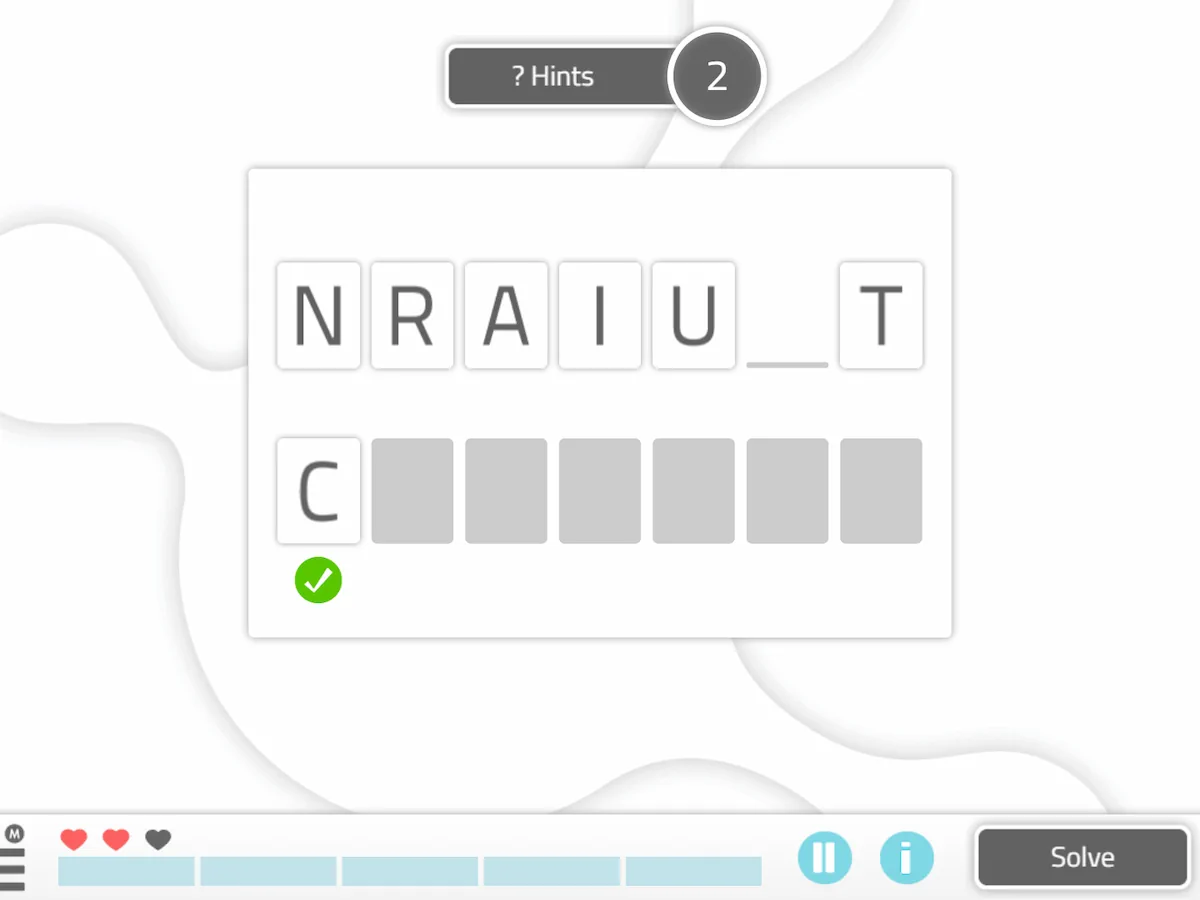
7. Forming sentences
The morphosyntax of a sentence would be the next level to work on in the patient’s verbal expression, in which the “relearning” will consist of placing the lexicon in The Correct Order to produce a meaningful utterance.
The utterances should contain a low number of words so as to gradually increase difficulty according to the patient’s performance; as a compensatory aid, the therapist will ask questions such as Who?, What?, How?, What does he/she do?, For whom?, etc.
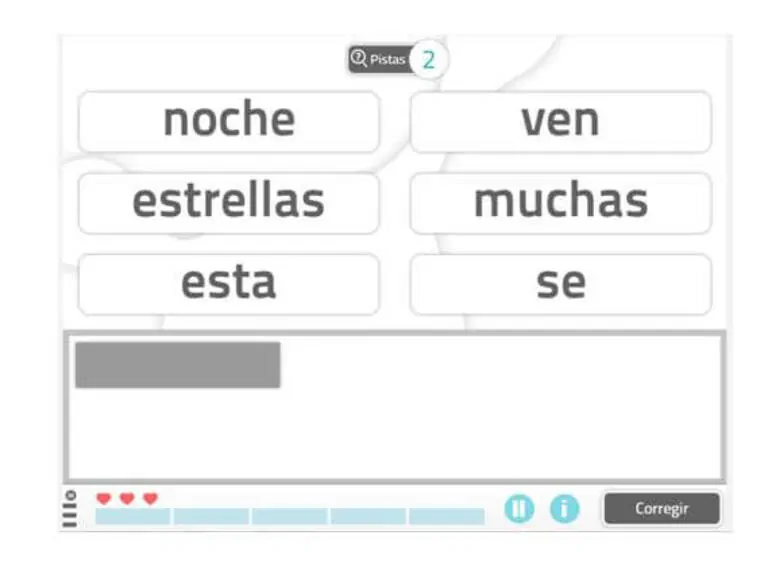
8. Matching Verbs to Image
Alternatively, show images that represent an action, giving the patient the opportunity to form a short sentence about the image.
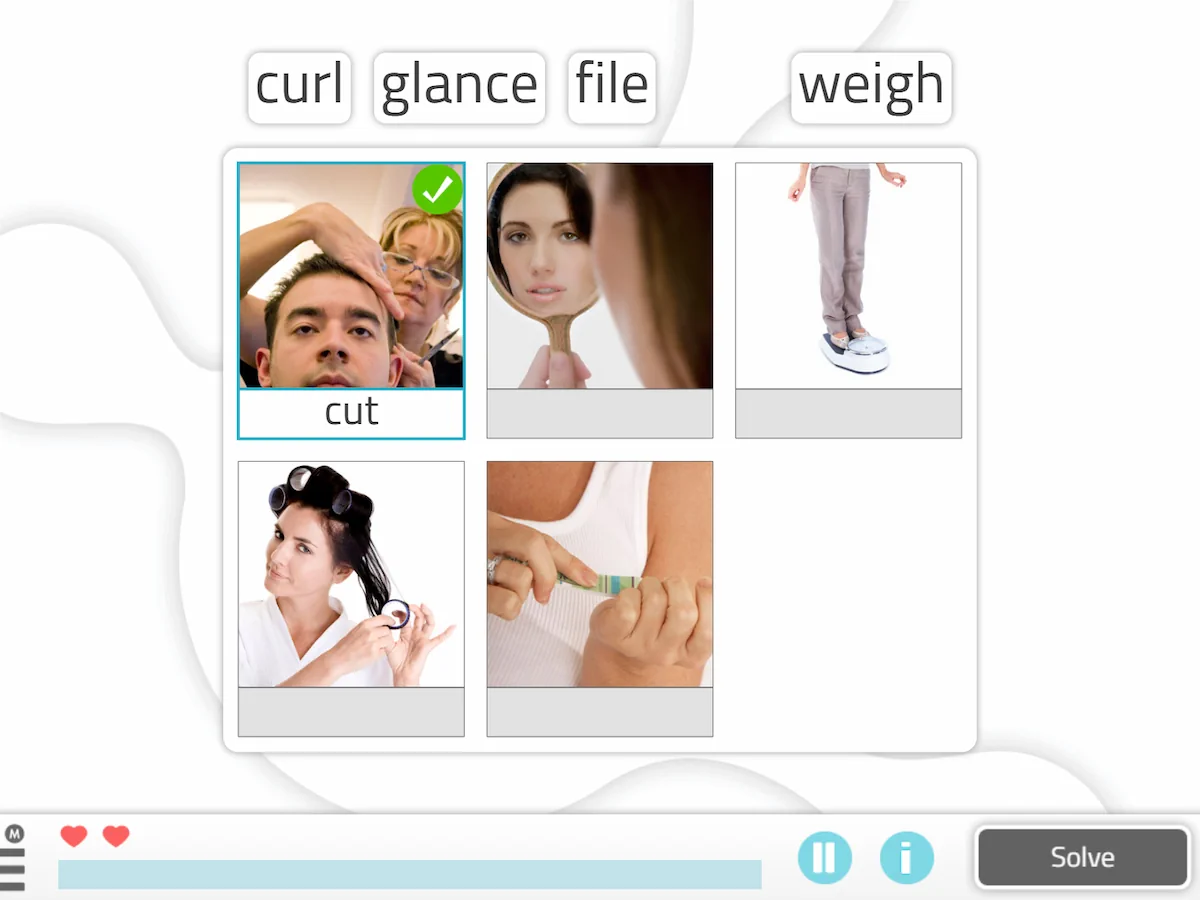
9. True or False (Auditory)
Although in patients with Broca’s aphasia comprehension is not a component that is usually affected, on some occasions there is a mild alteration at the morphosyntactic level, so activities such as: True or False (Auditory).
What does it involve?
In this auditory and visual activity the patient will have to listen carefully to a statement referring to the image and then answer whether the assertion is false or true, as a compensatory aid the patient may listen to the audio as many times as necessary.
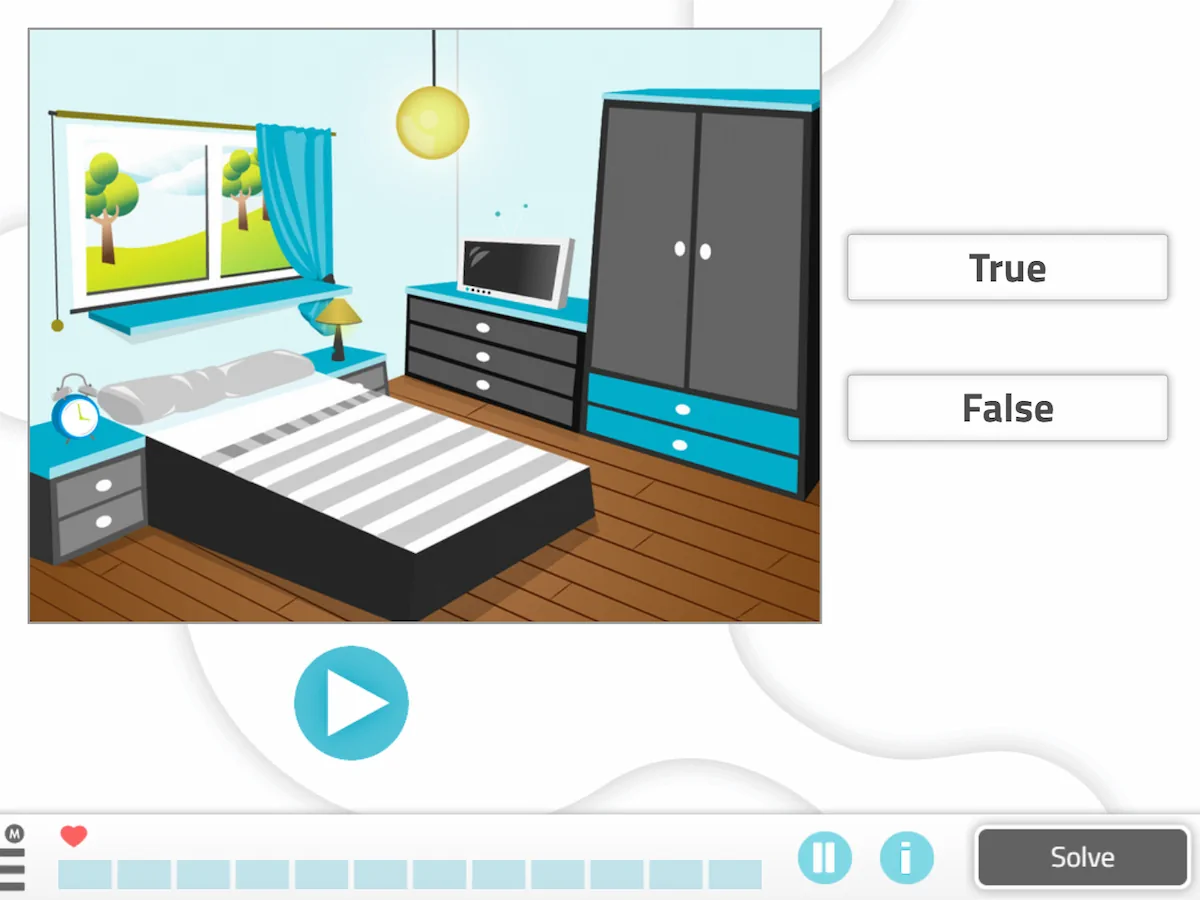
10. True or False (Written)
Another activity that will help stimulate morphosyntactic comprehension is True or False (Written). It consists of reading a statement and answering true or false to the question that appears on the screen. The patient may read the statement as many times as they like in order to answer correctly.
As the patient achieves better comprehension, the level of the activity will increase, showing a more complicated statement.
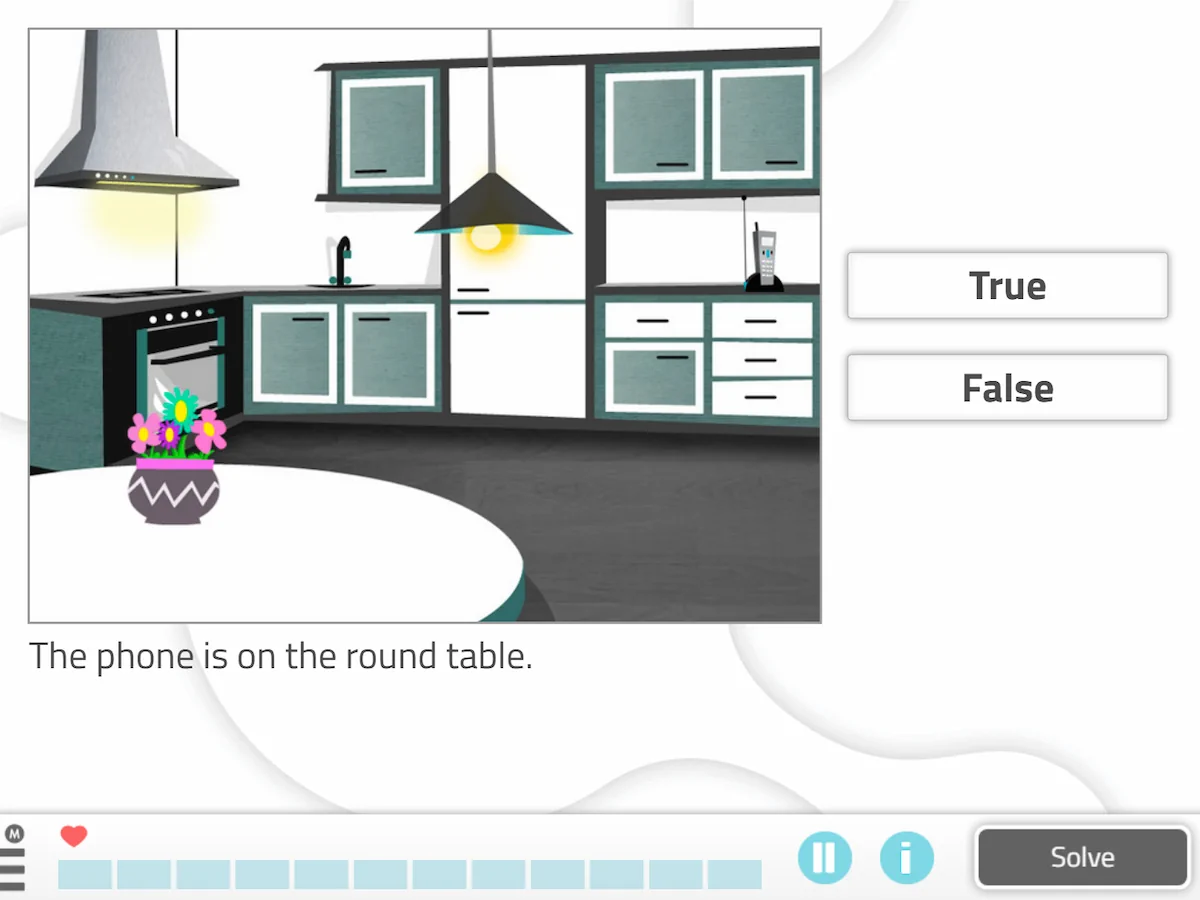
It is important that language therapy be carried out individually, adapted to the patient’s needs and preferences, considering their premorbid functional level.
NeuronUP as a tool for the therapist and the patient
Computerized activities provide the rehabilitator with a greater variety of exercises, help meet established objectives, and also allow the patient to know and identify the level of difficulty they are reaching and the achievement of goals.
They also allow rating their performance according to their own perception and gaining some autonomy in using the computer by themselves, also stimulating other cognitive functions.
The NeuronUP platform includes reinforcers that will help the patient with their motivation, undoubtedly a fundamental and sometimes difficult factor to manage in patients.
If you liked this post about activities for the neuropsychological rehabilitation of patients with Broca’s aphasia, you might also be interested in:
“This article has been translated. Link to the original article in Spanish:”
Actividades para la rehabilitación neuropsicológica en pacientes con afasia de Broca
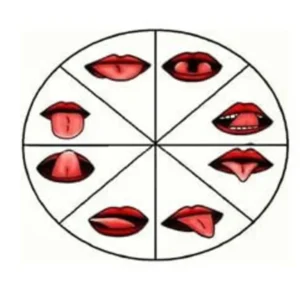




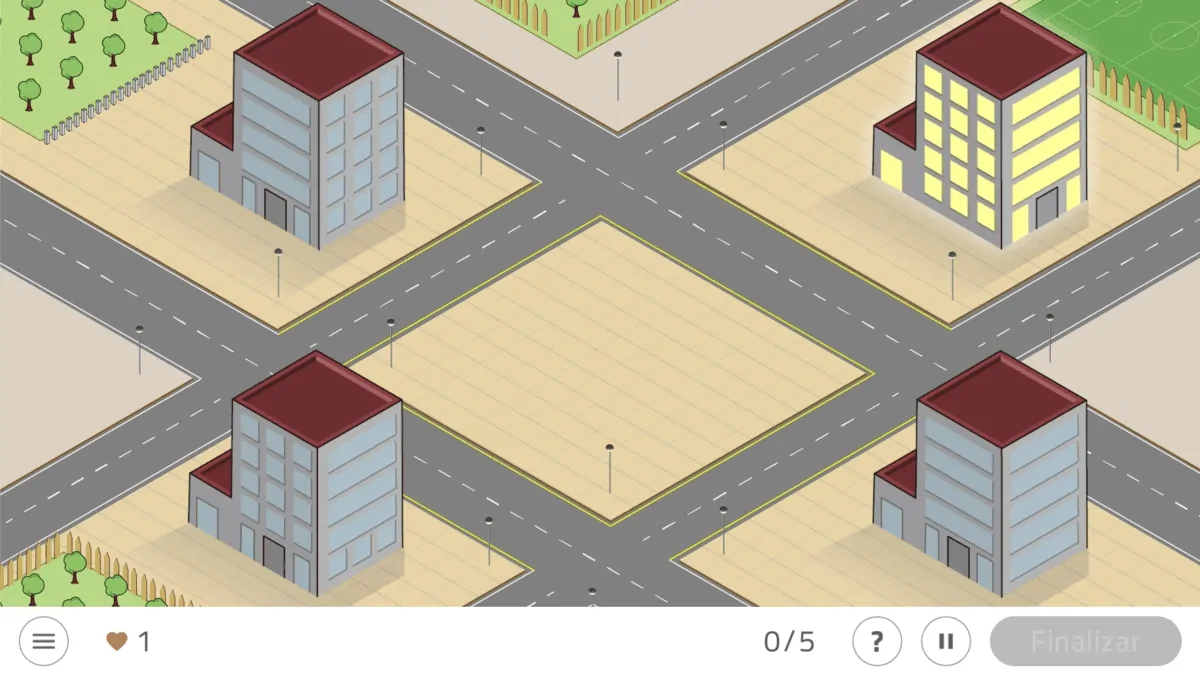
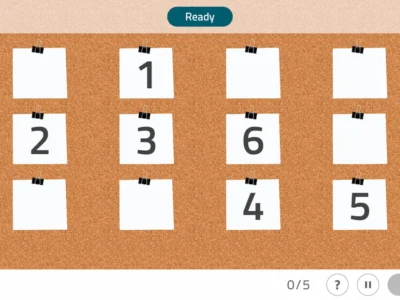
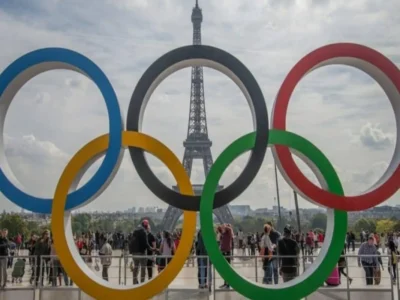
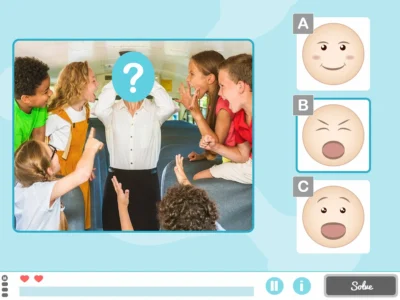
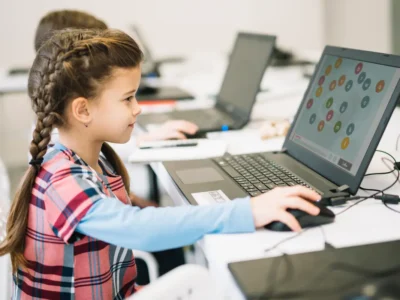
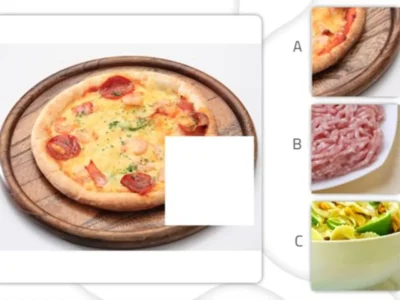
 Occupational Therapy: Characteristics, Objectives, and Functions
Occupational Therapy: Characteristics, Objectives, and Functions
Leave a Reply